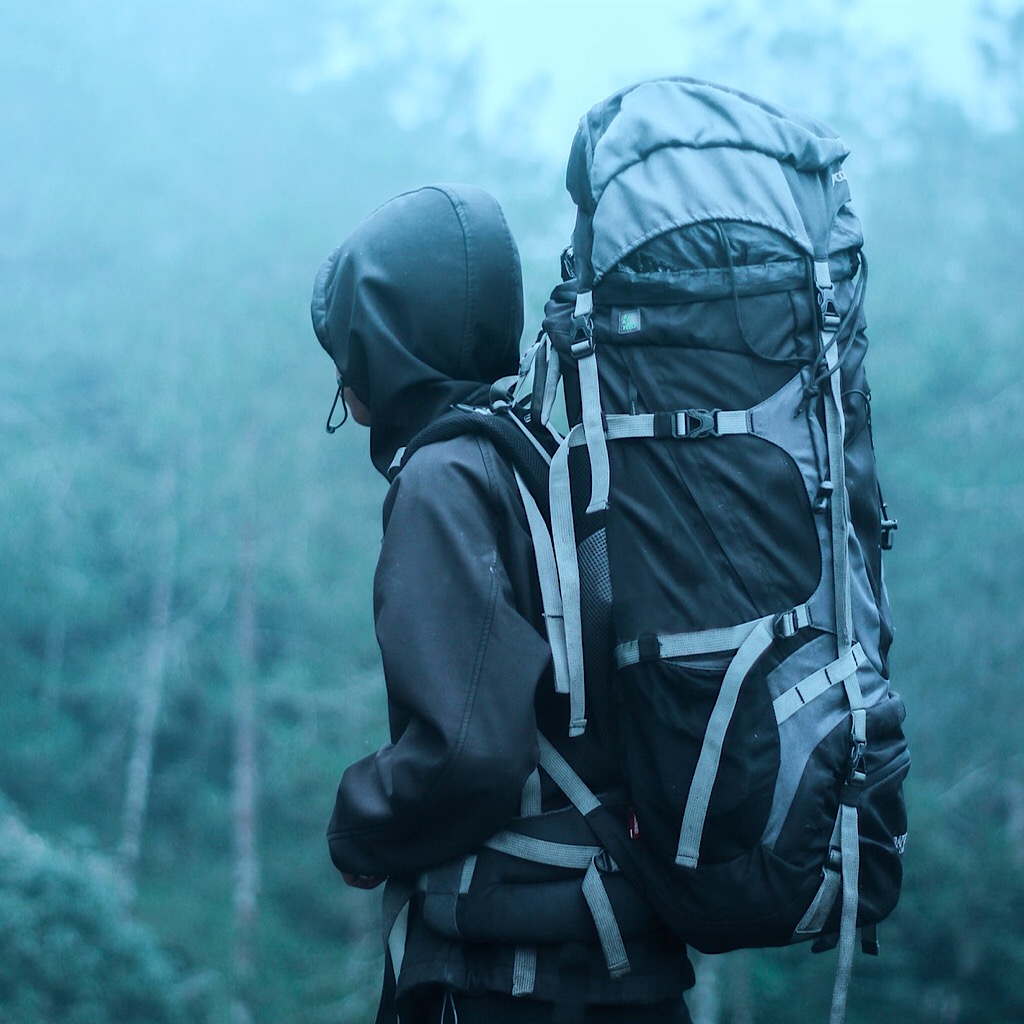
In the Year 2020: Living with a “New Normal”
There used to be a pretty well defined set of risks hikers and other outdoorsy people would take in the pursuit of their passion. This would include uncertain mountain weather and the problems it can cause, the potential for various physical injuries, and the typical hazards present on trail and while crossing waterways. And more. And we knew what they were. A lot of the information was new to novice hikers, but it wasn’t novel to all because it wasn’t really novel at all.
 The idea of a defined set of risks has been changed — perhaps forever thanks to the novel coronavirus and the COVID19 it causes. Those trained in user-level wilderness medicine will tell you about their training in regard to bodily substance isolation or BSI for short, but the training on dealing with actual communicable diseases… well, it’s nothing more than a fractional topic of mention, if that. Thanks to vaccines and modern medicine, the presence of these types of diseases in our lives is more limited than it once was so it’s lost focus over the decades. There was a time when a simple strep throat diagnosis could be a death sentence. That’s not usually the case anymore. (We would mention the horrifying challenges of bacterial resistance and the mindless shunning of vaccines by some, but these are subjects for another space.) It’s all changed, now. Expect this to be much more than a topic of mention in those wilderness medicine classes, moving forward.
The idea of a defined set of risks has been changed — perhaps forever thanks to the novel coronavirus and the COVID19 it causes. Those trained in user-level wilderness medicine will tell you about their training in regard to bodily substance isolation or BSI for short, but the training on dealing with actual communicable diseases… well, it’s nothing more than a fractional topic of mention, if that. Thanks to vaccines and modern medicine, the presence of these types of diseases in our lives is more limited than it once was so it’s lost focus over the decades. There was a time when a simple strep throat diagnosis could be a death sentence. That’s not usually the case anymore. (We would mention the horrifying challenges of bacterial resistance and the mindless shunning of vaccines by some, but these are subjects for another space.) It’s all changed, now. Expect this to be much more than a topic of mention in those wilderness medicine classes, moving forward.
A lot of people have stated they dislike the term “new normal” — some are probably denying the reality more than rejecting the phrase, and we get it — but a new normal is to be expected. Science demands it so barring blissful ignorance or willful disobedience, we will conduct our lives in a new way. Even for those who can’t or won’t, the new normal will be all around them. We suspect it will be inescapable for quite some time: masks, signage, distancing, and the trepidation in people’s eyes.
2020 has challenged humanity on a number of levels from social, to emotional, to economic. And we could probably discuss this at length, but the matter at hand is the matter of getting back out there. Safely. The new normal of the trails and public outdoor spaces. So let’s dive right in. We’re going to avoid emotion and politics and instead embrace science. It, at least, is consistent despite changes inspired by new discoveries. In this article we will go with what we know at this time, and we’re going to keep it simple. Or we’ll try, anyway.
Transmissibility: How you can get this disease
How it’s Spread
 The coronavirus that causes COVID19, like other coronaviruses, is passed along in respiratory droplets. By “droplets” we are talking about a mist so fine that a person is unable to even see it. These droplets can stay suspended in the air for a period of time — specifically this is subject to myriad factors. The droplets may also be pushed in any given direction by the wind, as well as land on surfaces to remain for a period of time ranging from mere seconds to days. Again, the specifics depend on myriad factors. Outdoors in the summer heat, because viruses in general are cold-loving, exterior surfaces and that environment just aren’t good places for a virus to stay viable, and the wind may prove to be your friend, as well.
The coronavirus that causes COVID19, like other coronaviruses, is passed along in respiratory droplets. By “droplets” we are talking about a mist so fine that a person is unable to even see it. These droplets can stay suspended in the air for a period of time — specifically this is subject to myriad factors. The droplets may also be pushed in any given direction by the wind, as well as land on surfaces to remain for a period of time ranging from mere seconds to days. Again, the specifics depend on myriad factors. Outdoors in the summer heat, because viruses in general are cold-loving, exterior surfaces and that environment just aren’t good places for a virus to stay viable, and the wind may prove to be your friend, as well.
Why it’s Dangerous
People who carry and spread the illness, as you’ve likely heard, may be pre-symptomatic (symptoms haven’t shown up yet) or asymptomatic (no systems at all) for several days. This makes this particular coronavirus extremely dangerous. People who feel perfectly fine may actually be infected and be passing it along to several people without even knowing it. To get around this problem, people have been asked to act as if they do have the disease, erring on the side of caution. That mindset takes an unselfish character and consists of several strategies for stopping the spread.
Mitigation: How you can curb disease transmission
Social Distancing
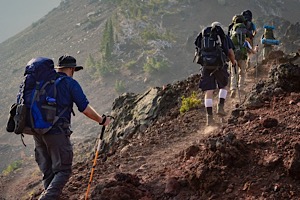 Or physical distancing, as some prefer, simply means to remain at least six feet apart from other people not ordinarily in your “social bubble.” This sounds simple and straightforward but it is anything but. After taking into account things like wind direction and speed, temperatures, humidity, and the presence of sun (viruses hate the sun), technically speaking, distancing outdoors — while easier than doing so in confined spaces — is a challenge. One has to remain vigilant. It may be unpredictable.
Or physical distancing, as some prefer, simply means to remain at least six feet apart from other people not ordinarily in your “social bubble.” This sounds simple and straightforward but it is anything but. After taking into account things like wind direction and speed, temperatures, humidity, and the presence of sun (viruses hate the sun), technically speaking, distancing outdoors — while easier than doing so in confined spaces — is a challenge. One has to remain vigilant. It may be unpredictable.
Do note, however, it takes a lot of the virus — the “viral load” as it’s called — to contract the disease, but in terms of virology, “a lot” can come from a single touch or from a single breath, depending on the viral load contained in said touch or breath. So, to avoid the disease, we mustn’t share our air, so to speak. It’s a simple concept that’s so hard for people to get right. And forget cheating. It sees you. Being oblivious may prove fatal. So it has to be done right, and on trail that requires some forethought and an actual strategy, even more so on narrow trails.
For starters, the descending person should yield to the person coming up the trail, which is the standard etiquette anyway, but now we will want to move well off trail via a drainage or on some other durable surface (we cannot forget LNT). Same for breaks. This is hard to do on many trails. Five feet, four feet, three feet or less is easy as to fall into as that second beer. But as noted, cheating and obliviousness doesn’t work. Thanks to the viral load necessary to be infected, however, passing a single person on trail probably isn’t a great way to become infected or to infect others. Repeated, however, it ups the ante.
- Consider wind speed and direction | blowing strongly in a neutral direction is best.
- Consider temperature and humidity | high temps and humidity diminish the virus.
- Consider solar presence and intensity | direct sun (ultraviolet light) destroys the virus’s viability.
- Consider respiratory volume | people hiking uphill breathe faster, deeper, and with more force.
- Consider where you stop or stand | though challenging, try to allow space for others.
Wearing a Mask
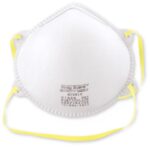 Do we suggest wearing a mask while hiking and exerting yourself? Well, no, that sounds awful. But, if distancing cannot be maintained a mask should be deployed unless the things we considered under social distancing lead us to conclude that conditions are “safe.” This is a bit of a gray area on one hand. Encounters may be so fleeting that masking is probably unnecessary because the chances of encountering sufficient viral load are very low, but it really depends on circumstances at a level we cannot see so we are forced to only visualize. And then there’s the probability of repeatability. Define for us, if you will, what a hundred fleeting encounters equates to. Remember that a single touch or breath may have a significant viral load.
Do we suggest wearing a mask while hiking and exerting yourself? Well, no, that sounds awful. But, if distancing cannot be maintained a mask should be deployed unless the things we considered under social distancing lead us to conclude that conditions are “safe.” This is a bit of a gray area on one hand. Encounters may be so fleeting that masking is probably unnecessary because the chances of encountering sufficient viral load are very low, but it really depends on circumstances at a level we cannot see so we are forced to only visualize. And then there’s the probability of repeatability. Define for us, if you will, what a hundred fleeting encounters equates to. Remember that a single touch or breath may have a significant viral load.
- Consider the number of encounters | every encounter, even distant, adds risk.
- Consider the duration of encounters | the more time spent around the virus, the greater the risk.
- Consider the virus moves both ways | a mask protects both the wearer and those around them.
- Consider your impact on others | make no mistake, showing respect to others IS the right thing to do.
Limiting Contact
By contact we aren’t referring to social distancing or direct contact with other people. We are referring, instead, to contact with common surfaces. Much of these surfaces, because of the environment, might not pose a huge risk, but “handhold trees” and other common touch points could be a source of the virus. Think of it this way: sneeze glitter into your hand, then go about your business for ten minutes and note how there’s now glitter everywhere. Viruses and glitter are both annoying in that way. Naturally some people will use nitrile or latex gloves. These can help by allowing us to remove the layer with the germs, but gloves need to be changed. A lot! And we still can’t touch our face so the gain, if any, is minimal.
- Consider surfaces you touch | public contact points like handholds might be tainted.
- Consider what else you touch | this includes you, don’t touch your face: eyes, nose, mouth, ears.
- Consider hand-sanitization | use correctly (minimum 20 seconds wet with surface friction, like soap, rinse if possible).
- Consider using gloves | but only if contacting human patients or known coronavirus-tainted surfaces directly.
- Consider avoiding handholds altogether | proper footwear and using trekking poles can make you independent.
Challenges: Stuff hikers will care about
Transportation
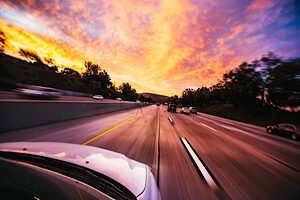 We used to care about our environment so much we would encourage hikers to carpool or seek public transportation. That’s changed. The love of the environment is still there, but no more shared costs, and the whole social aspect of heading to a trailhead together is gone unless those people are in our bubble or the parties involved decide to assume the risks.
We used to care about our environment so much we would encourage hikers to carpool or seek public transportation. That’s changed. The love of the environment is still there, but no more shared costs, and the whole social aspect of heading to a trailhead together is gone unless those people are in our bubble or the parties involved decide to assume the risks.
Parking
This was an issue in many of our forests and parks already due to a heightened level of demand on our shrinking resources by a nature-loving public. Now that the number of cars will likely increase, parking will become an even greater problem. Lots may have to be expanded, though we think that option is the least desirable and it impinges further on our natural resources. These suggestions may help, however:
- Redefine early; the early bird gets the parking spot.
- Carpooling with masks in use might be an option.
- Have a plan B, C, D, etc., as backup in case the lot is full.
- Avoid the most popular times/places by thinking outside the box.
- Meet and park elsewhere then pedal or walk to the trail.
Infrastructure
Some of the things we used to take for granted may be limited in availability. Fuel, road services, even medical services should something bad happen might be limited to some degree. This is not the time to be placing more demands on these resources so there are some things we can do to help ourselves remain independent:
- Fuel up at home topping off all of the various liquids.
- Travel with spare food and water, a first aid kit, and more.
- Check the weather and be prepared in all ways possible.
Conveniences
 While part of us wants to encourage feeding the economies of those places where the recreation occurs, some conveniences we used to enjoy might not be as safe as they once were. People will have to do their due diligence before partaking, otherwise be prepared to live without these conveniences by taking some simple steps:
While part of us wants to encourage feeding the economies of those places where the recreation occurs, some conveniences we used to enjoy might not be as safe as they once were. People will have to do their due diligence before partaking, otherwise be prepared to live without these conveniences by taking some simple steps:
- If regionally “local” consider a day trip instead of an overnight.
- Bring travel meals and drinks and a way to store and prepare them.
- Camp out in the warm months… legally that is, though demand may be high.
Search and Rescue
It is logical to assume the mass of the SAR volunteer base will be diminished. Not only are many SAR volunteers medical people who might be busy with COVID19-related matters, but some volunteers will surely decide to sit things out due to personal or familial health concerns. So not needing SAR services is your absolute best option. This can be accomplished by the following:
- Stick to where you know. This is not the time to be exploring too widely.
- Limit your risks by staying well within your comfort, ability, and knowledge zones.
- Be prepared to help yourself by having the right gear and knowledge.
And in the End: Some closing remarks
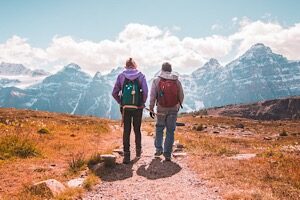 Wariness and cognizance is not paranoia, it is simply a manifestation of having this disease in our lives. It is a natural reaction to anyone who acknowledges the science and doesn’t dispute the facts.
Wariness and cognizance is not paranoia, it is simply a manifestation of having this disease in our lives. It is a natural reaction to anyone who acknowledges the science and doesn’t dispute the facts.
The novel coronavirus doesn’t acknowledge anything we seem to place importance on as humans. It cares not that we are rich or poor, or for our religion, our socioeconomic class, our gender, our sexuality, our ethnicity or race, our biases, or that we sometimes curse, and especially not our political leanings. It’s an equal opportunity disease. One that we are obligated to acknowledge as humans. Even if we don’t care enough to acknowledge it for ourselves, there are people around us who will care deeply that we try. In a civil world we must apply the Golden Rule and offer our respect to others. Of course, you already know this. Here are some other facts you probably already know… but in case you don’t:
- Again, offering respect to one another IS the right thing to do.
- This novel coronavirus is not a bio weapon. It is natural.
- This is not a conspiracy led by any country or political party.
- It’s not contrived or fake news. It may feel surreal and that’s normal.
- It is dangerous. We know of a COVID19 Support Group and it’s hell. Join, read, learn.
- There is still more for all of us to learn. This is all based on our current understanding of reality and may change.
It’s not “the end of the world as we know it,” as the famed lyrics say, but, boy, it has certainly undergone some dramatic changes over the past few months. If nothing else, we should develop a fondness for the memory of those carefree pre-COVID days.
